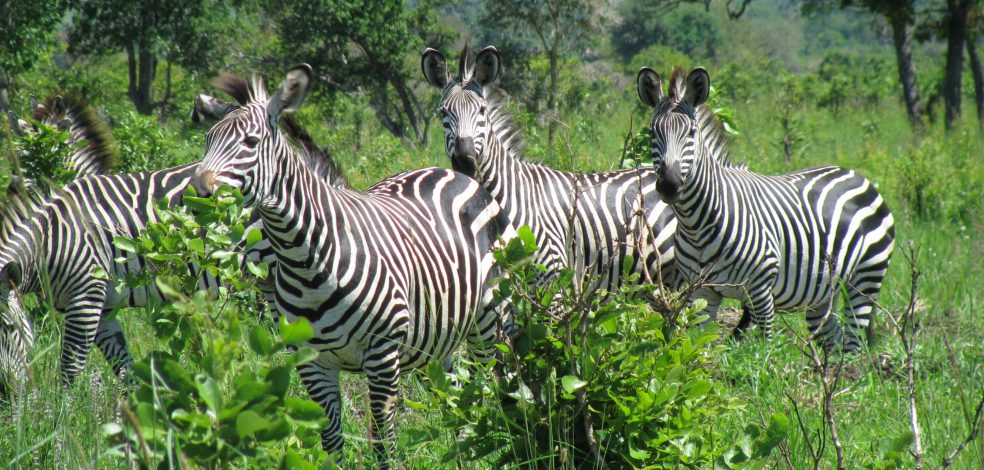As he began his PhD program, Takuya Yahagi was puzzled by some laboratory findings. Juvenile red blood limpets, Shinkailepas myojinensis, seemed to survive and grow extraordinarily well at temperatures between 15-25° C. Adult limpets live in deep sea vent communities, where temperatures generally range between 6-11° C.

Adult Shinkailepas myojinensis. These are approximately 6 mm in length. Credit: Takuya Yahagi.
Yahagi and his colleagues wondered why limpets are making babies that survive and grow at much higher temperatures than they are likely to experience after hatching.

Deep sea hydrothermal vent community at 795 meters depth at Myojinsho Caldera in the northwest Pacific. White patches on the rocks are vast communities of chemosynthetic bacteria which are being grazed by purple/pinkish limpets. You can also see the white feathery feeding legs of a barnacle population in the upper portion of the photo. Credit: JAMSTEC
Yahagi reasoned that perhaps, in the natural world, the limpet juveniles live in different (warmer) environments than do their parents. If they migrated closer to the sea surface, their world would be somewhat warmer. But limpet babies are microscopic, so capturing them near the sea surface (and knowing that you had captured them!) is very challenging. Working with three other researchers, Yahagi decided to collect indirect evidence to test the hypothesis that baby limpets migrate to the surface where they feed and grow before returning to the ocean depths.

Larval S. myojinensis limpet 156 days after hatching. sh=shell, f =foot, e=eye, vl=velar lobe.
Initially, the researchers needed to determine what temperatures these growing limpets preferred. With the help of a remotely operated submarine, they collected adult limpets laden with egg capsules, and placed newly hatched larvae into separate containers under different conditions. Some larvae were fed and raised at one of six different temperatures: 5, 10, 15, 20, 25 and 30° C. Other larvae were starved at 5, 15 or 25° C to see how long they survived at different temperatures. If the larvae were migrating upwards to warmer waters, it was important to see how long they could survive until they arrived at the richer food sources near the surface.
Starved larvae survived up to 150 days at the lowest temperature, and for more than three weeks at 25° C, which provided ample time for upward migration (even at very mellow baby limpet swimming speeds). Fed larvae grew much more quickly at warmer temperatures, with best growth at 25° C, and no growth at 5-10° C, which is the approximate temperature at hydrothermal vents.. Larvae initially grew quickly at 30° C, but long term exposure to that temperature killed them.

Growth (shell length) of fed larvae at different temperatures.
These temperature profiles corresponded to temperatures at the sea surface down to about 100 meters, which ranged between 19-28° C. This correspondence supported the hypothesis that juveniles migrated upwards in the water column after hatching. But could Yahagi and his colleagues find any direct evidence for this vertical migration? To answer this question, they video-recorded new hatchlings in a clear plastic bath, and measured how fast these limpets swam, and what direction they preferred. They discovered that new hatchlings constantly swam upward in their test bath, and swimming speed was considerably faster at warmer temperatures.
The sea surface is a wonderful place to find food, because sunlight is abundant, so there are abundant phytoplankton to satisfy even the most voracious juvenile limpets. But sea surfaces also have very strong currents which can whisk juvenile limpets hundreds or thousands of kilometers away. The upshot is that vertical migration and wide dispersal of juveniles by ocean currents can introduce new genes into far-away limpet populations.

A hot vent animal community at 700 meters depth at Minami-Ensei Knoll in the northwest Pacific. Prevalent groups include lobsters (white), two species of shrimp, mussels and two different limpet species. Credit: JAMSTEC.
Gene flow – the movement of genes from one population to another – has some important genetic impacts. Without gene flow, two populations that are separated from each other can become genetically distinct. But the mixing of genes from long-distance dispersal can prevent this from occurring. The researchers compared 1218 base pairs of the COI gene from 77 adult limpets that were collected from four different sites which were separated, in some cases, by more than 1000 kilometers. In support of the gene flow hypothesis they found no evidence of any genetic differentiation among the four populations.

Hydrothermal vent fields in the northwest Pacific Ocean. Black squares are limpet collection sites for this study. Notice the vast distances separating these populations.
Gene flow requires long distance dispersal, and the adult limpets travel very little along the sea floor. This finding of no genetic differentiation among the geographically separated populations supports the hypothesis that the juveniles migrate upwards, feed on abundant phytoplankton, and are carried to new distant environments. There, they mature and settle into new ocean vent communities where they can feed on the superabundant chemosynthetic bacteria associated with the ocean vents. But we still don’t know how limpets find a new ocean vent community – do they migrate, checking out possible vent habitats, while they are still juveniles and still capable of swimming? Do they have sense organs that pick up environmental cues such as hydrogen sulfide content, water temperature, turbulence or noise from vent emissions, to help them complete their fantastic ocean voyage?
note: the paper that describes this research is from the journal Ecology. The reference is Yahagi, Takuya, Hiromi Kayama Watanabe, Shigeaki Kojima, and Yasunori Kano. 2017. Do larvae from deep‐sea hydrothermal vents disperse in surface waters? Ecology 98: 1524-1534. Thanks to the Ecological Society of America for allowing me to use figures from the paper. Copyright © 2017 by the Ecological Society of America. All rights reserved.

This was the most entertaining yet, and I’ve been reading these all along. Cool science.
LikeLiked by 1 person
Very interesting!
LikeLike